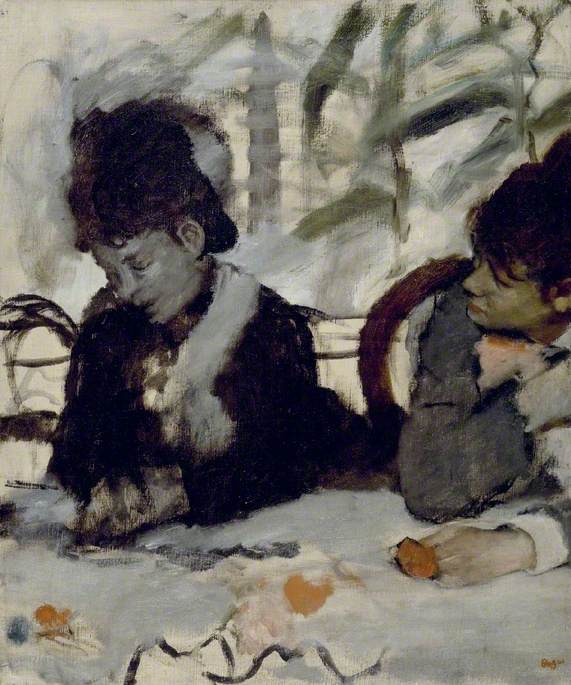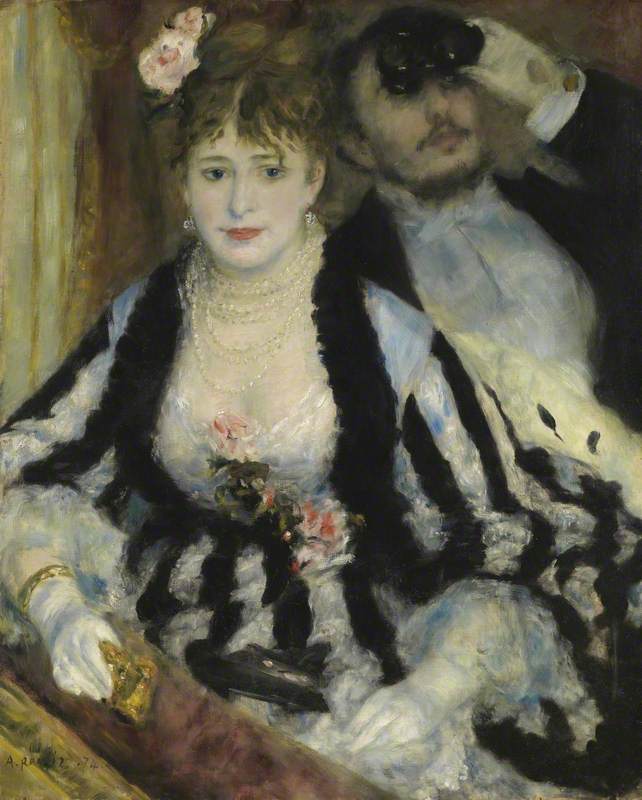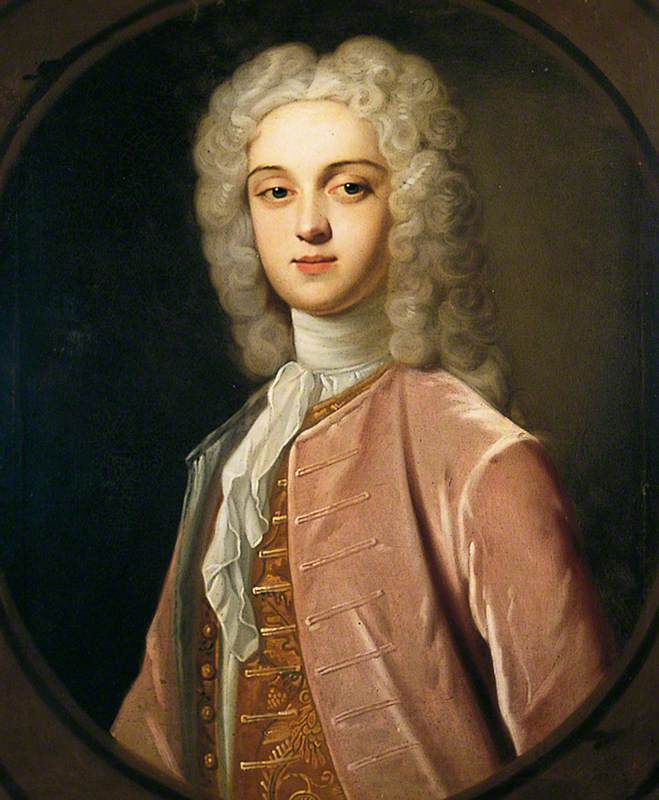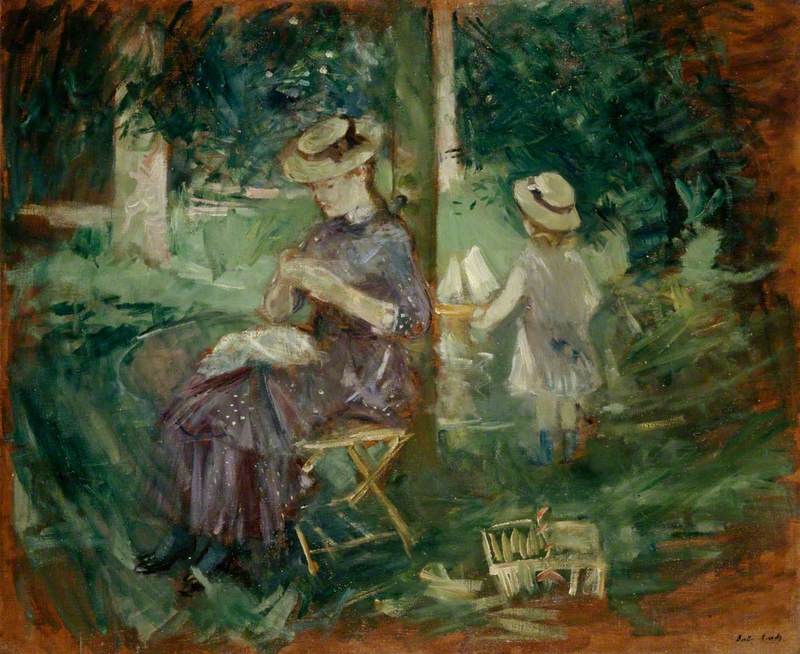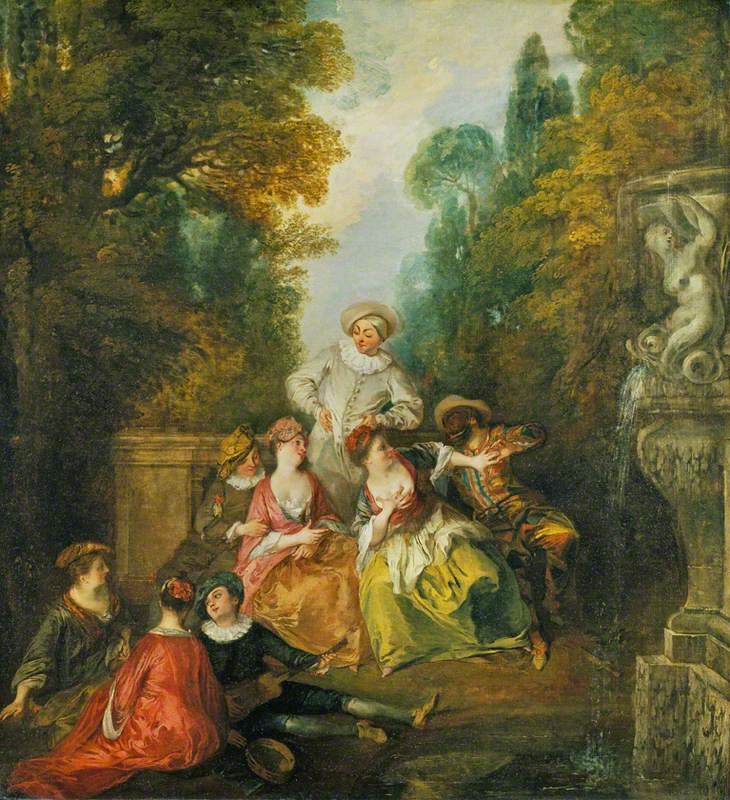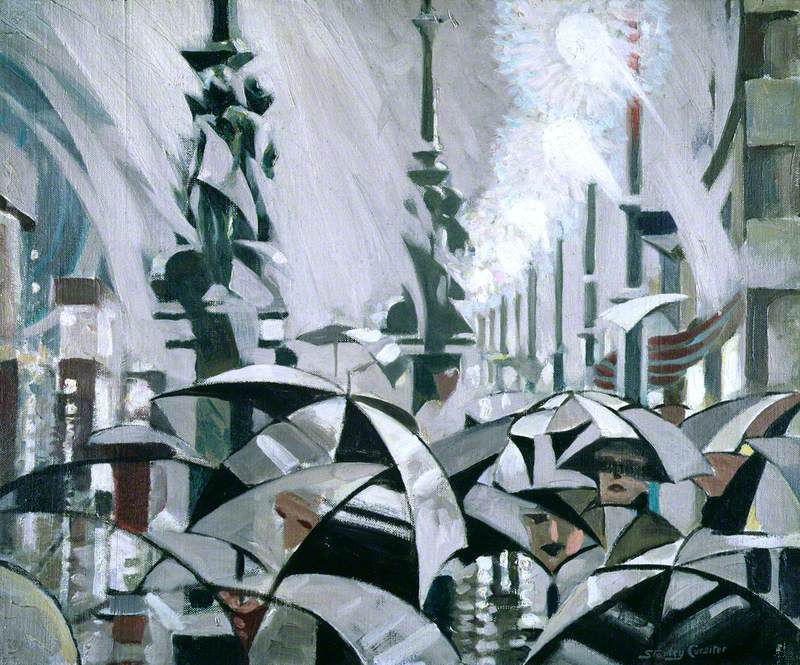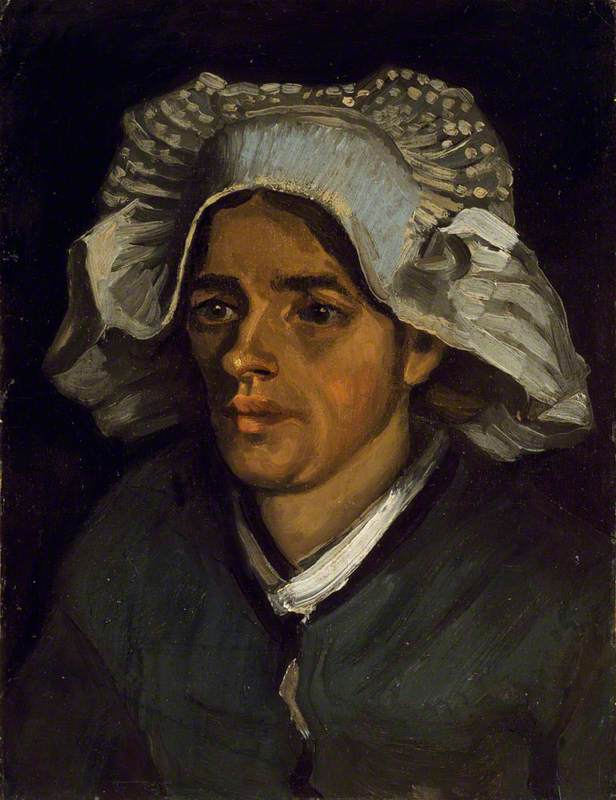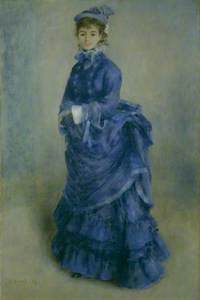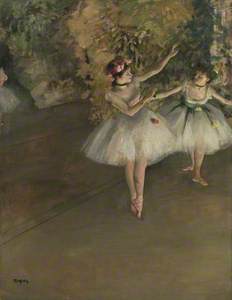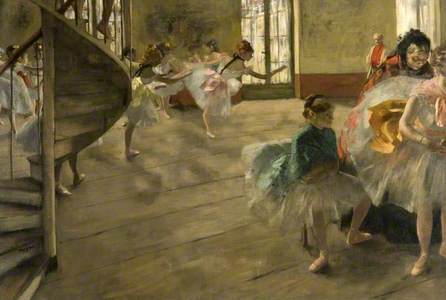The Impressionists painted the contemporary life of the city and the landscapes of rural retreats. During the later half of the nineteenth century, when Impressionism flourished, Paris was the creative centre of the art world and artists flocked there. It was in Paris that the Impressionist artists fostered their independent exhibitions and it was Paris that became the subject for many of their paintings.
Parisian women inspired much of the city scenes in these Impressionist artworks – women have been muses throughout art history. In the late nineteenth century, their depiction changed: less about sitting pretty, women were shown more as contemporary urbanites.
Paris was a hub of entertainment. This was the time of the Moulin Rouge, the fame of the Paris Opera and the birth of the can-can. Women were the facilitators of all things exciting. They were the ones who performed, they were the ones who served the booze and they were the ones who were seen in opera boxes wearing the latest fashion.
A perfect day for a modern Parisian might involve a coffee enjoyed outside a café on a sunny street. It was the same for the Impressionist painters: they too liked their cafés. However, instead of coffee, they ordered absinthe. And instead of looking onto a pretty street, they looked towards the women performers on a stage. Cafés were a social hub for intellectuals and creatives to meet and discuss their ideas, but these were a world away from the cafés we know today.
The cafés of late nineteenth-century Paris were places to get drunk with rowdy, like-minded men, to peer at the lovely women who were putting on concerts and to flirt with the barmaids who were largely doubling as sex workers. Artists like Manet and Degas were known to loiter in these establishments. They often borrowed what they saw – the customers and the stage performances – for scenes in their paintings.
Manet's eye was directed at the barmaids rather than the performers – the women performers were often a smudged outline in the background.
One of the most famous paintings of the Impressionist movement is A Bar at the Folies-Bergère. The barmaid is looking at us, waiting for us to place our order. There are many ways to read her face, but her straight arms pushing against the counter make her unavailable to connect with. Perhaps she is tired of her drunken customers trying to flirt with her. Perhaps she is annoyed at the assumption that she will go home with a man for a price. Or perhaps she is simply doing her job, ignoring the question, 'Why don't you smile?'
A Bar at the Folies-Bergère
1882
Édouard Manet (1832–1883) 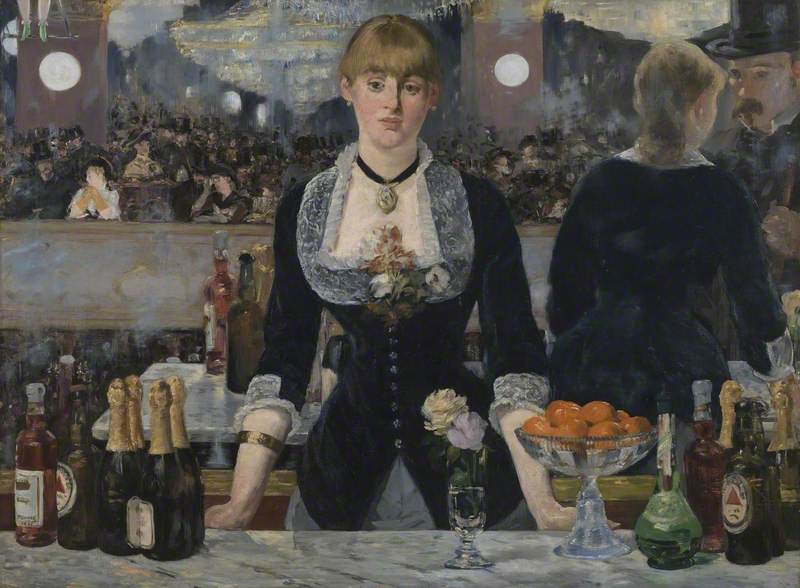
Manet knew this barmaid, named Suzon. He painted the final work entirely in his studio where she came to pose for him. Sex workers were part of Manet's everyday life; he suffered from a syphilis infection at the time of painting A Bar at the Folies-Bergère, and would die of complications from the sexually transmitted disease the following year. He likely met many sex workers at cafés, like the one where Suzon worked.
Manet, a few years senior to most of the Impressionist painters, often set the trend for the subjects of Impressionist paintings. When he depicted café-concerts, the others followed suit. Degas was struck by the performers at these concerts. In French collections, you can find Degas' close-ups of singers on stage, performing to their blurred audience. In UK collections, you will find examples of Degas' infamous ballerinas.
Degas' ethereal paintings of graceful young ballerinas hint at a darker story behind the canvas. We know that ballet dancers today put a lot of blood, sweat and tears into their art form but the little girls who trained back then also dreamt of bringing home a paycheck to their fathers. The high rates of homelessness and poverty pushed young women from poor families to enrol in ballet.
Behind the stage of the Paris Opera Ballet, there was a string of men who watched the girls practise and get ready. They had access to the dressing room of the dancer of their choice. These men were patrons of the ballet and demanded to see that their payments paid off, including their enterprise towards the young women. The rich patrons could pay to flirt with the ballerinas in the foyer de la danse before deciding on who would be their choice. The youngest dancers of the company were called petit rats and were the most vulnerable to this exploitation.
The Paris Opera Ballet is still renowned as a leading ballet company, but much has changed. The dancers today are inspirational to young people, now titled Etoiles, meaning 'stars'.
The stars of the theatre in the late nineteenth century were the women who watched the talent. The glistening ladies of leisure sat in a loge (a private balcony box) to advertise her worth. It was typical for a well-to-do man to invite a trophy woman, whether wife or friend, and seat her toward the front of their loge so that she was on display to the rest of the audience. This was her chance to model her fashionable clothes.
In La Loge by Renoir, the woman looks at the viewer as she leans across her loge balcony in her striking dress. She is clearly showcasing her best wardrobe with her heavy pearl necklace, arresting striped outfit and flowered bodice accessory. The young woman is so captivating that it takes a minute to notice her company sitting behind her using his binoculars. The binoculars were not just used to see the stage, they were used to look across the loges and see who was with who, and who was wearing what.
At the Theatre (La Première Sortie)
1876-7
Pierre-Auguste Renoir (1841–1919) 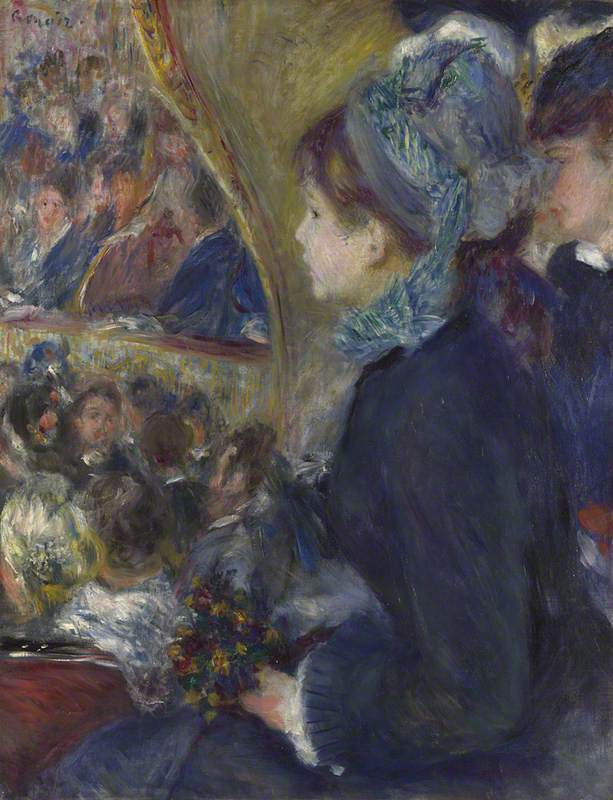
Renoir did well at capturing the poses of women at the theatre. In La Première Sortie ('The First Outing') he takes on another perspective towards a woman in a loge, showing the rest of the crowd looking at her. Renoir retains glimmers of eyes and faces in amongst the flicks of paint that make the impression of an audience. These eyes are looking at the viewer and at the subject of the painting. It is her first outing and she must be prepared to be presented and stared at like this from now on.
Women at the time of the Impressionists were put on display. The barmaid was looked up and down by the customer who wanted to see if he should buy her company for the night. The dancer performed while the aged patrons watched from offstage. The lady watched the theatre while her company displayed her as a trophy. The women of Paris made the city's entertainment, through their showcasing as a spectacle.
Tegan Huskinson, writer


